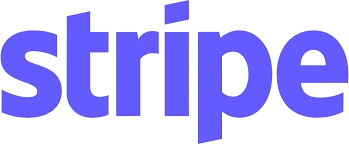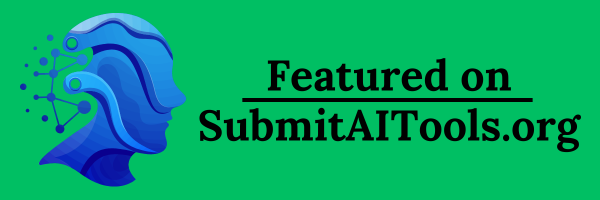ParaFlow
From Ideas to Specs in One Seamless Flow

What is ParaFlow?
Paraflow acts like a sharp-eyed partner in the design room, taking your rough sketches or half-formed thoughts and shaping them into crisp, ready-to-build layouts. This handy setup lets folks whip up everything from app screens to landing pages without getting bogged down in the usual back-and-forth. Designers and builders who've given it a spin often say it feels like having an extra set of hands that just gets the vision, turning what could be weeks of tweaks into a smooth afternoon's work.
Introduction
Paraflow showed up a bit back when a crew of product folks realized most tools left too much heavy lifting on the table, from jotting down requirements to mocking up clicks. They built it to glue those steps together, starting with a simple canvas where ideas could breathe. Word got around fast in startup circles and design shops, where teams started sharing wins like landing a full prototype from a napkin doodle. It's grown into this quiet powerhouse that keeps things moving, especially for those juggling multiple projects, by handling the grunt bits so you can chase the spark that matters.
Key Features
User Interface
You step into a wide-open workspace that feels less like software and more like a shared desk, with spots to drop notes or drag elements right where they click. Tabs slide over for different views, like a quick flow chart or screen grid, and everything updates as you fiddle, no saving or reloading drama. It's got that easy rhythm where picking a style from a row of thumbs pulls in matching pieces, keeping the whole thing looking pulled together without extra hunts.
Accuracy & Performance
When you lay out a basic need, it snaps back with layouts that hug the details tight, rarely needing a second pass to fix wonky alignments or off vibes. It chews through bigger briefs in under a minute, even on standard setups, and holds steady when you're layering in extras like color shifts or flow links. Builders note how it keeps the essence of your starting point, so the end bits ring true without straying into generic territory.
Capabilities
It kicks off by pulling your words into a tight requirements rundown, then sketches out paths users might take, complete with every stop along the way. From there, it builds out full sets of pages you can nudge around, link up for test walks, and even push straight into code outlines for the coders. Think evolving a fitness tracker mock from a quick wire or freshening up an order dashboard with smart visuals—it's got room for all that and more, like theme swaps or data spots that pop.
Security & Privacy
Your drafts and flows stay buttoned up in private folders, with simple shares only when you tap go, and nothing lingers longer than needed after you're done. It hooks into your usual spots like code repos without grabbing more than the basics, so teams can pull in without the worry of loose ends. Folks building sensitive stuff appreciate the straightforward locks that keep peeks at bay until everyone's on the same page.
Use Cases
Product leads use it to map out new features for apps, like adding quick-scan bits to hiring forms that save hours down the line. Solo makers turn event invites into clickable teasers, tweaking colors to match the brand without starting over. Teams in e-shops refresh back-end views for better overviews, pulling in charts that make sense at a glance. Even side-hustlers sketch mobile trackers for habits, linking screens to see how it all hangs together before sharing with testers.
Pros and Cons
Pros:
- Rolls the whole build chain into one spot, cutting tool swaps.
- Grabs your drift quick, spitting out stuff that fits like it was measured.
- Bridges to dev tools without the usual export headaches.
Cons:
- Shines brightest with some design know-how; pure newbies might circle a bit.
- Big projects can pile up files if you don't tidy as you go.
- Relies on steady net for the heavy lifts, though offline peeks work.
Pricing Plans
You can jump in with a free round to test the basics, like a single run-through from idea to mock, no card needed. Monthly access for steady use hovers around the mid-teens, unlocking unlimited flows and team nods, while yearly dips lower for those in it long-haul. They toss in a trial stretch to wander the full setup, and scaling options let you bump up as your crew grows, keeping it light until you're hooked.
How to Use Paraflow
Sign up with a quick email tap, then hit the canvas with your starting spark—words, a rough draw, or a short brief. Let it brew a requirements sheet and path map, poke at the pieces to refine, then watch it fill in screens you can shuffle and connect. Give it a walk-through to test the jumps, tweak for feel, and slide the code bits over to your build spot when it's primed. Save versions as you go, pulling back to branch off new takes.
Comparison with Similar Tools
Next to board-based sketchers, Paraflow adds the smart nudge to fill gaps without endless drags, though those might feel freer for pure visuals. Against code-first builders, it eases in the front-end polish before the tech dive, saving rounds of redraws. It carves out a lane for quick full-cycles where others split the load, hitting that sweet middle for teams wanting speed without skimping on depth.
Conclusion
Paraflow wraps the wild ride from brainwave to blueprint in a tidy package that lets your best ideas stick the landing. It clears the clutter so you pour into what sets your work apart, turning solo spins or group grinds into something polished and poised. As more outfits chase faster builds, this one's poised to keep leading the pack, proving good design thrives when the tools fade into the flow.
Frequently Asked Questions (FAQ)
Can I start with just a text description?
Totally, it pulls from words alone to kick off the whole chain.
Does it handle mobile-specific layouts?
Yep, it shapes for phones or tabs right in the mix.
How editable are the generated screens?
Fully—drag, type, resize, all on the spot without locks.
What dev tools does it sync with?
Hooks into spots like GitHub and your go-to editors smooth.
Is there a limit on project size?
Scales with your plan, from quick hits to hefty suites.
AI Landing Page Builder , AI No-Code & Low-Code , AI Developer Tools , AI Design Assistant .
These classifications represent its core capabilities and areas of application. For related tools, explore the linked categories above.
ParaFlow details
This tool is no longer available on submitaitools.org; find alternatives on Alternative to ParaFlow.
Pricing
- Free
Apps
- Web Tools

















